Esfahan: the Imperial Capital of Safavid dynasty (: the Sufi Shahs) which is already “Half the World”
ΑΝΑΔΗΜΟΣΙΕΥΣΗ ΑΠΟ ΤΟ ΣΗΜΕΡΑ ΑΝΕΝΕΡΓΟ ΜΠΛΟΓΚ “ΟΙ ΡΩΜΙΟΙ ΤΗΣ ΑΝΑΤΟΛΗΣ”
Το κείμενο του κ. Νίκου Μπαϋρακτάρη είχε αρχικά δημοσιευθεί την 22α Ιουνίου 2019.
Στο κείμενό του αυτό, ο κ. Μπαϋρακτάρης παρουσιάζει τμήμα ομιλίας μου στην Νουρ-σουλτάν (πρώην Αστανά) του Καζακστάν τον Δεκέμβριο του 2018 με θέμα τις μεγάλες αυτοκρατορικές πρωτεύουσες της Ασίας και της Αφρικής, καθώς και την εμφανή κατωτερότητα και αθλιότητα των δυτικο-ευρωπαϊκών πρωτευουσών αποικιοκρατικών χωρών.
— — — — — — — — — — — — — — — — — — — —
https://greeksoftheorient.wordpress.com/2019/06/22/ισπαχάν-η-αυτοκρατορική-πρωτεύουσα-τ/
===============
Οι Ρωμιοί της Ανατολής — Greeks of the Orient
Ρωμιοσύνη, Ρωμανία, Ανατολική Ρωμαϊκή Αυτοκρατορία
Όπως και στην περίπτωση της Σαμαρκάνδης, δεν υπάρχει καμμιά ευρωπαϊκή πόλη πλην της Σταμπούλ που να μπορεί να αντιπαραβληθεί με το Εσφαχάν σε αυτοκρατορικό μεγαλείο.
Μαζί με τις προαναφερμένες δύο πρωτεύουσες, καθώς και την Σαχ Τζαχάν Αμπάντ (το λεγόμενο Παλαιό Δελχί), πρωτεύουσα των Μογγόλων αυτοκρατόρων (Γκορκανιάν) της Ινδίας, και το Πεκίνο, το Εσφαχάν είναι μία από τις πέντε μεγαλύτερες και πιο εντυπωσιακές αυτοκρατορικές πόλεις και τις πέντε πιο σημαντικές πρωτεύουσες του Παγκόσμιου Πολιτισμού και της Παγκόσμιας Ιστορίας των τελευταίων δύο χιλιετιών.

Οι Ιρανοί το λένε πιο λακωνικά κι έχουν δίκιο: το Εσφαχάν είναι ο Μισός Κόσμος. Όλη η υπόλοιπη επιφάνεια της γης είναι το υπόλοιπο μισό του κόσμου.
— — — — — — — — — — — — — — — — — -
Το Τζαμί του Σάχη, Εσφαχάν
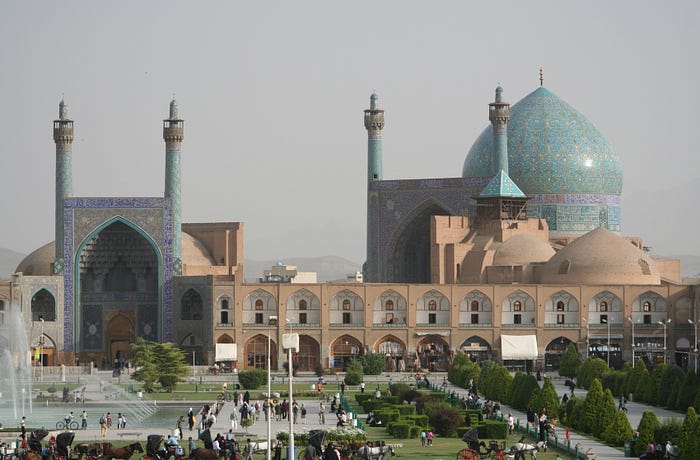
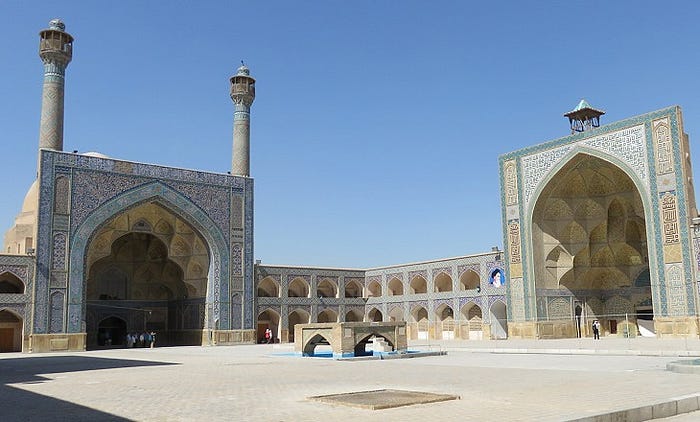



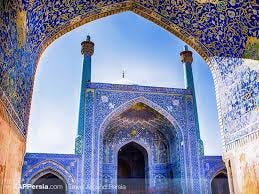
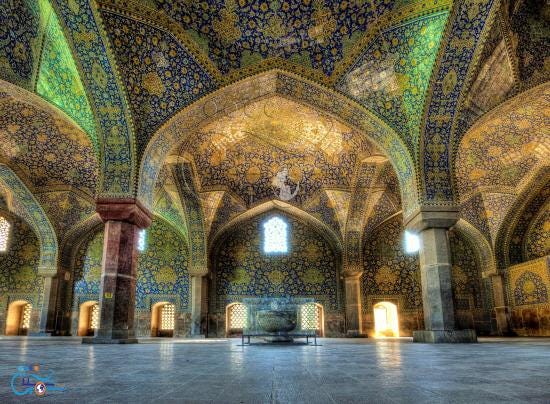
Το Τζαμί του Σεΐχη Λουτφολλάχ, Εσφαχάν

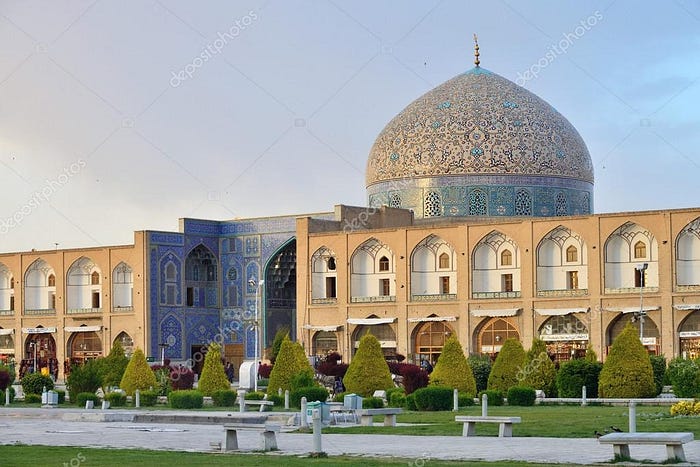
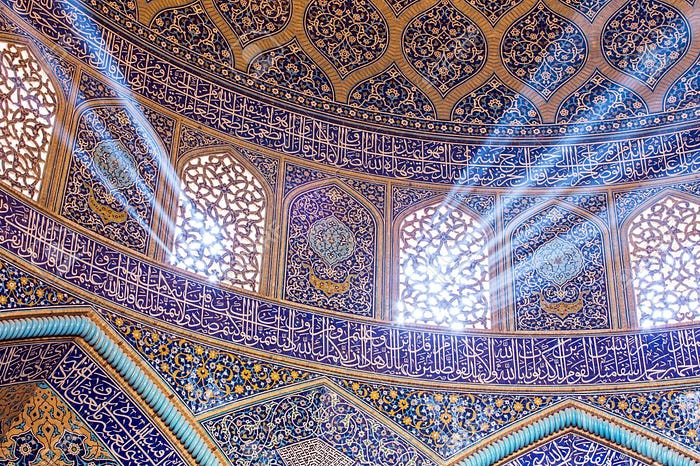
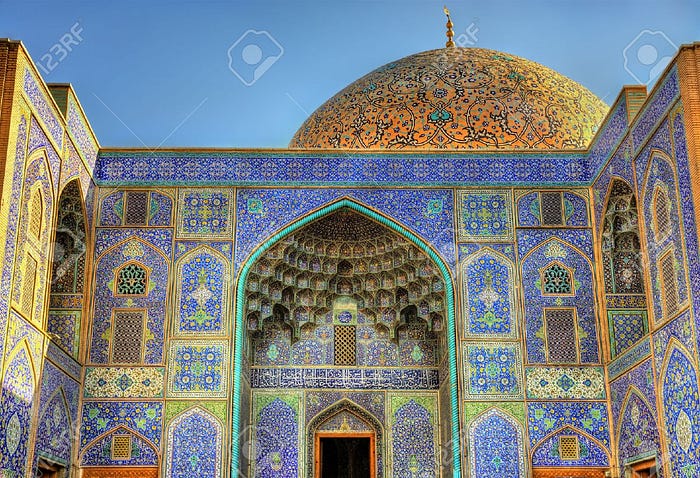

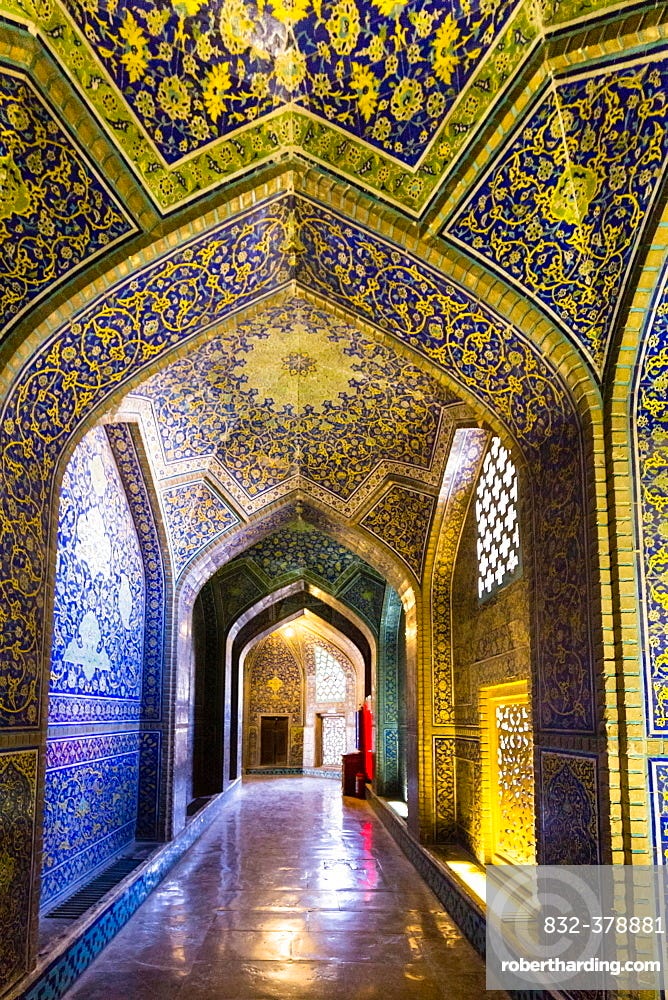
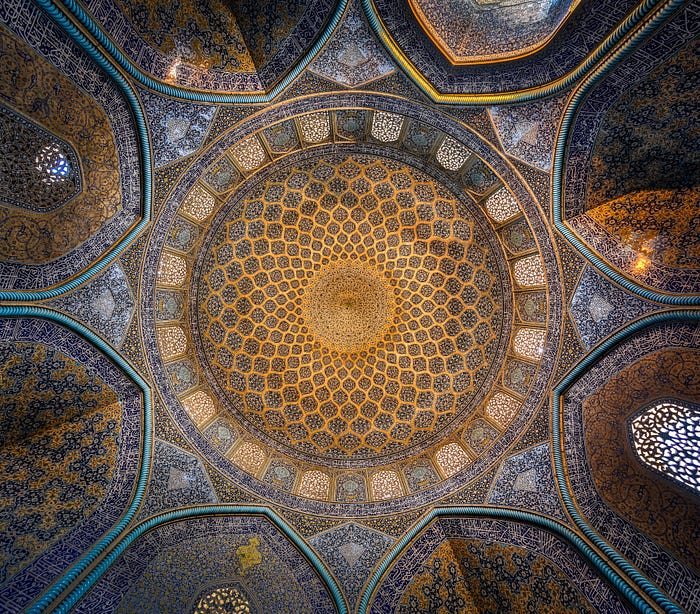
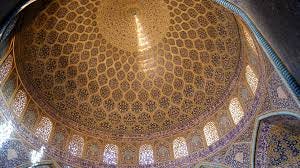
Ανακτορικό Περίπτερο Αλί Καπού, Εσφαχάν
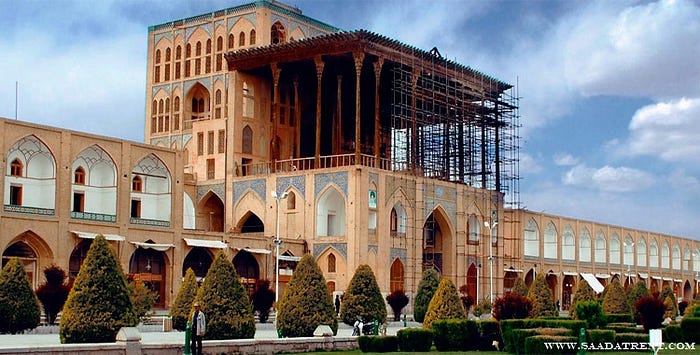

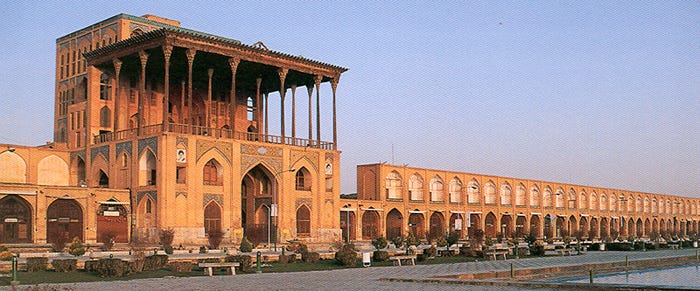
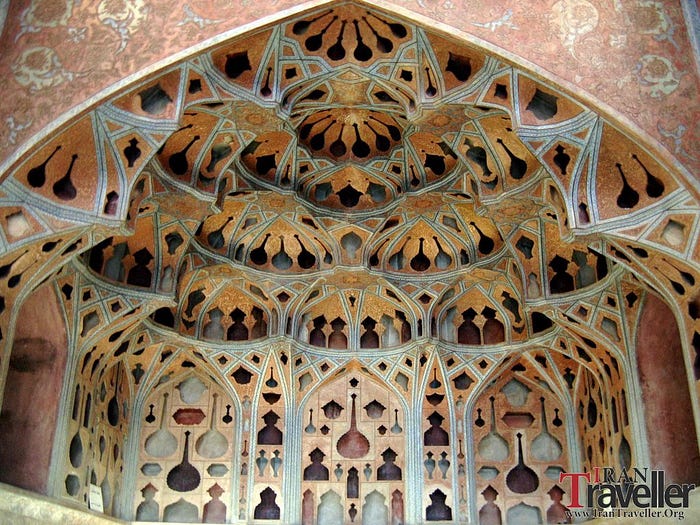
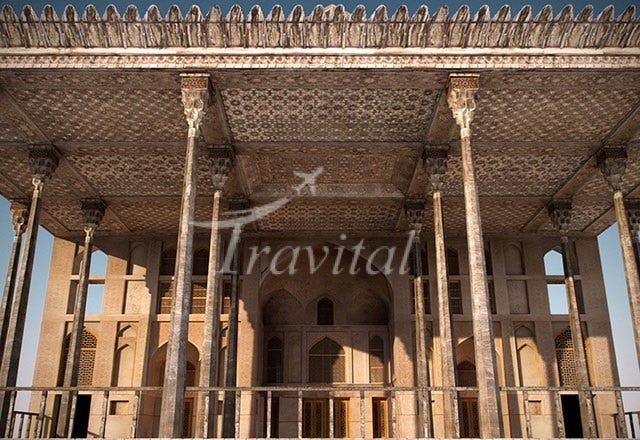

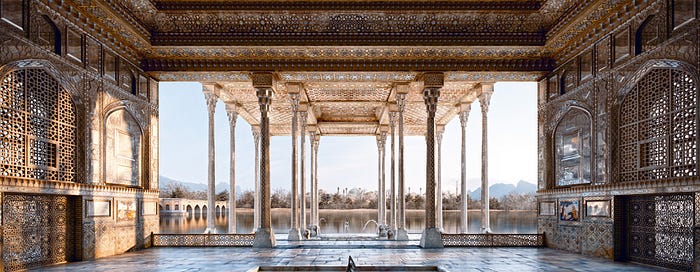
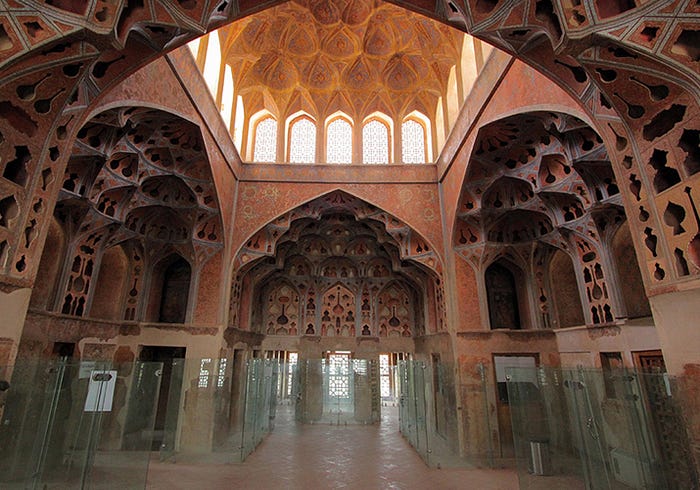
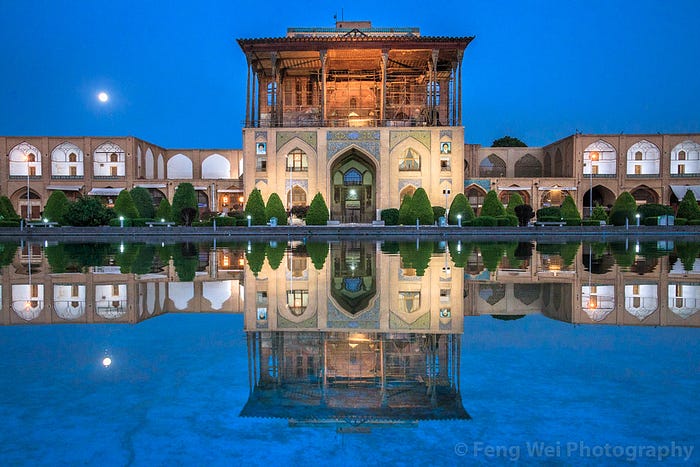
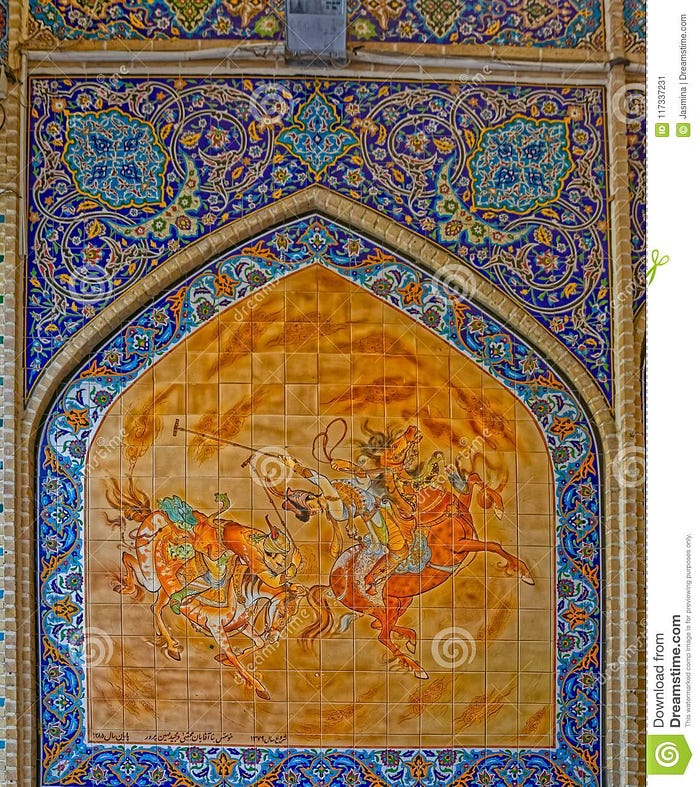
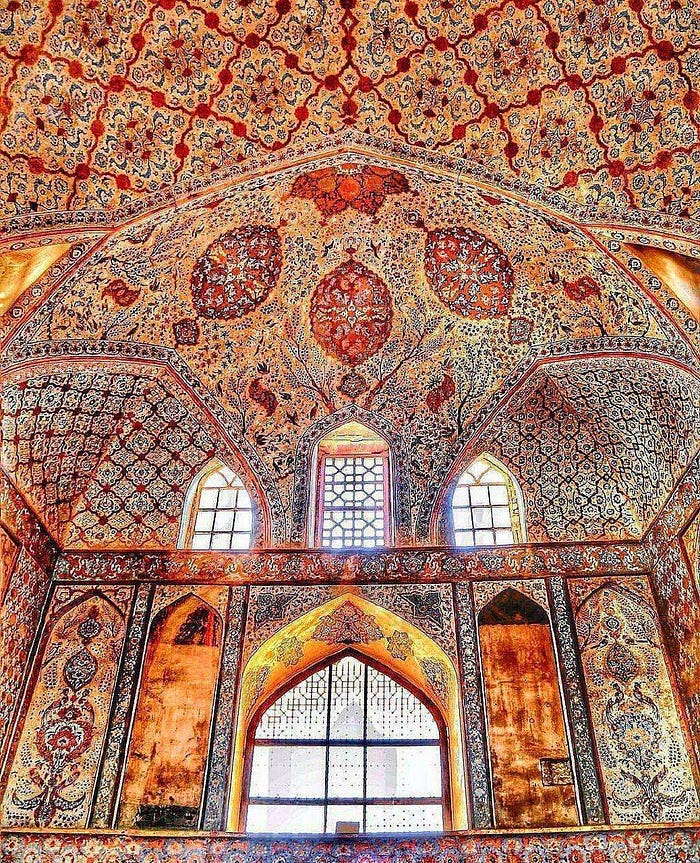
Ανάκτορο των Σαράντα Κιόνων (Τσεέλ Σοτούν), Εσφαχάν

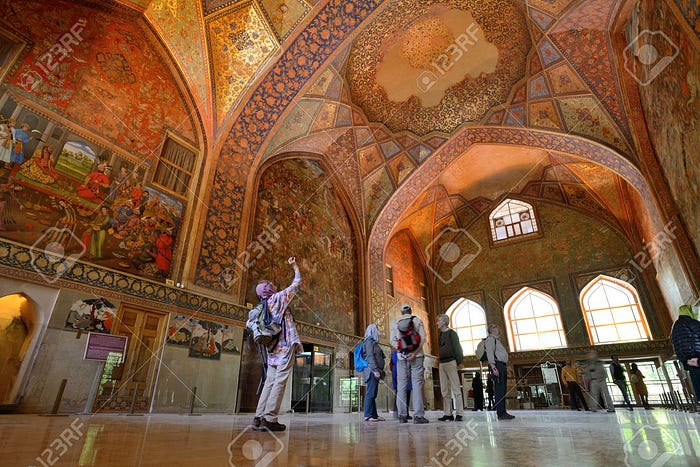

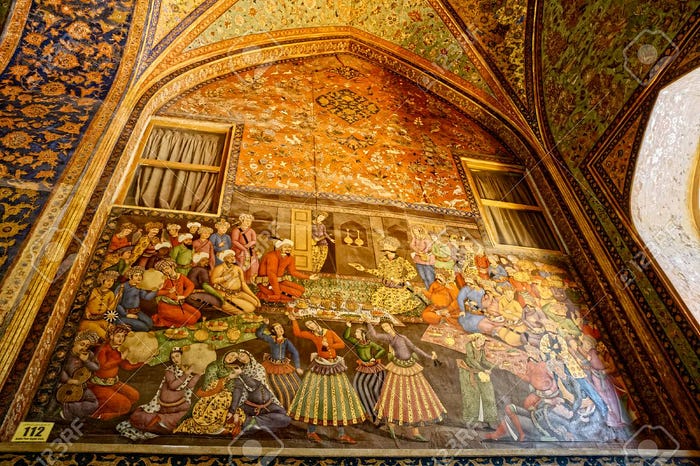
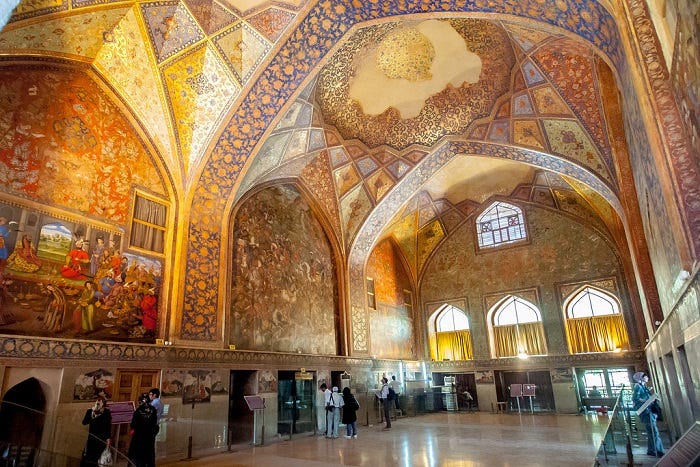
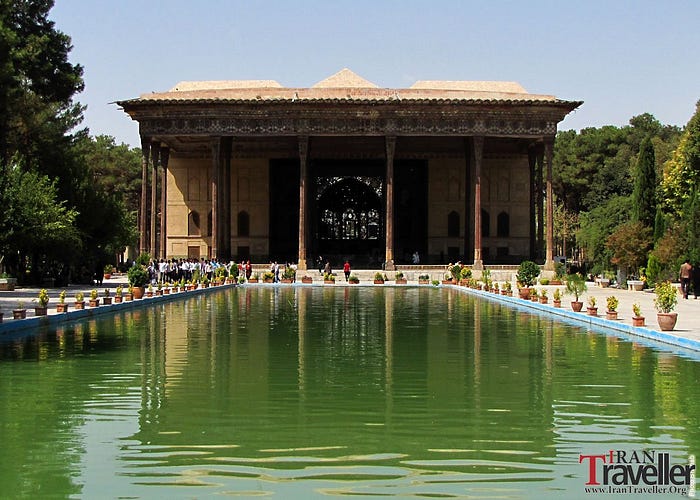

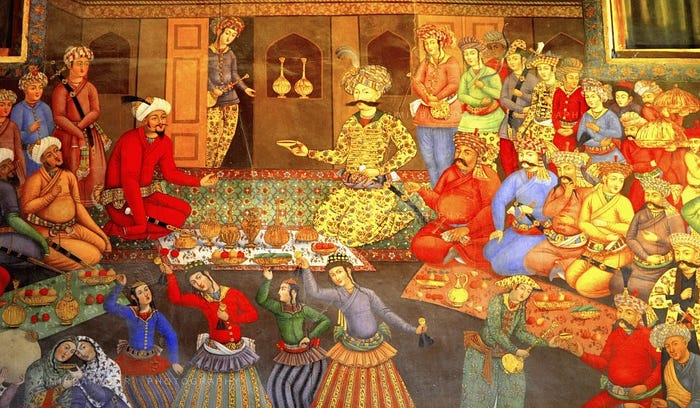
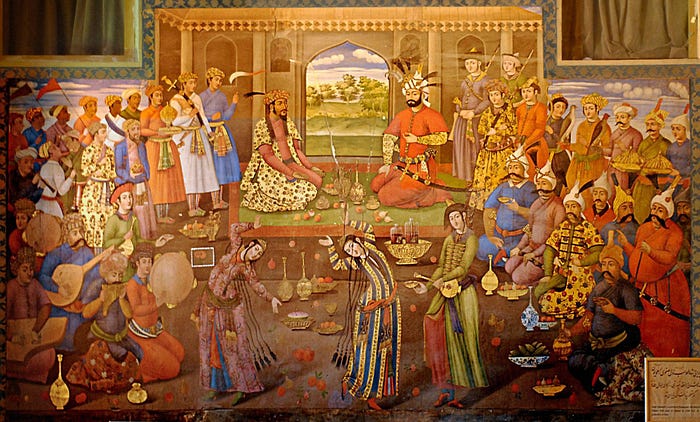
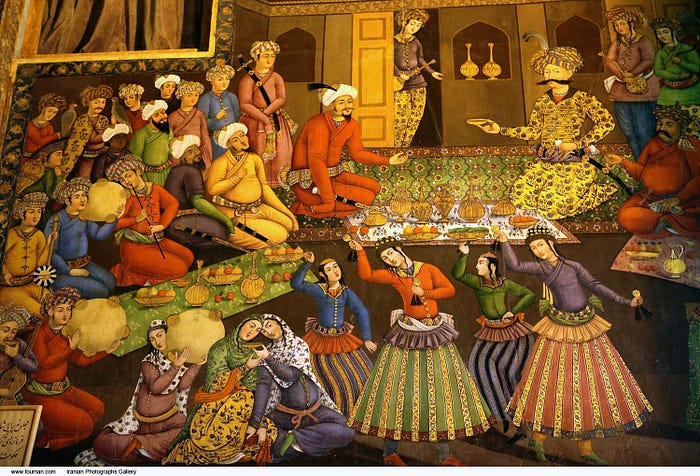
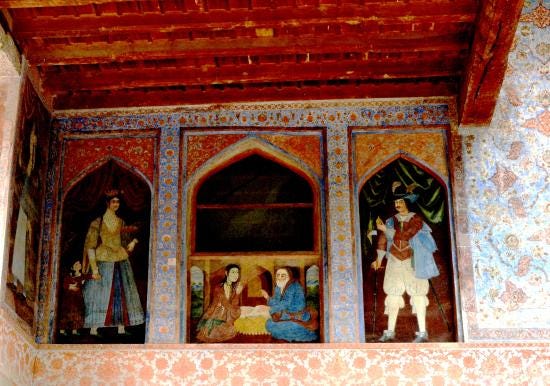

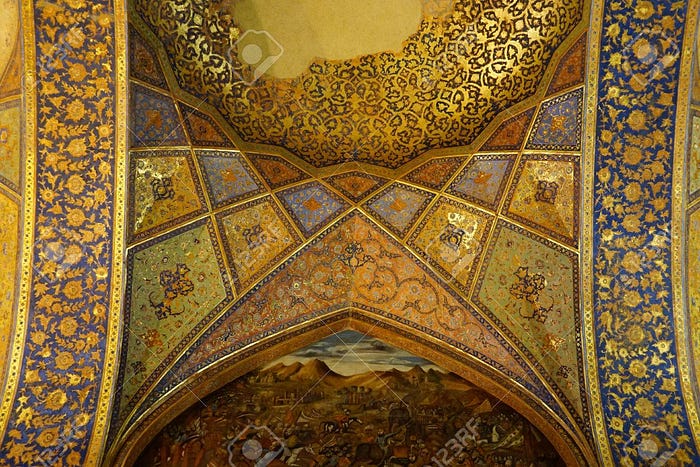

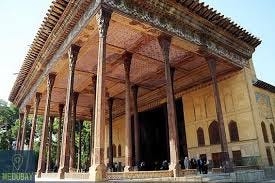
Ανάκτορο των Οκτώ Παραδείσων (Χαστ Μπεχέστ), Εσφαχάν
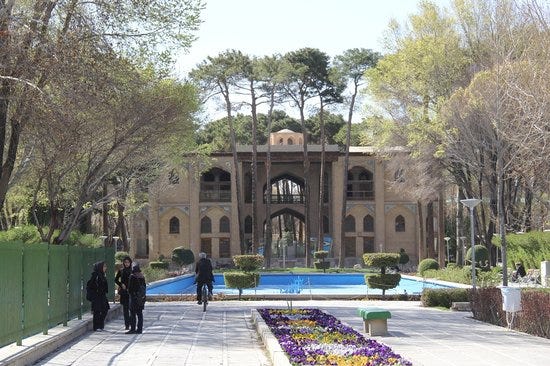






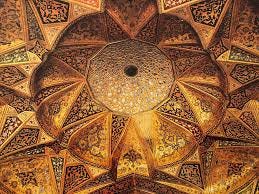



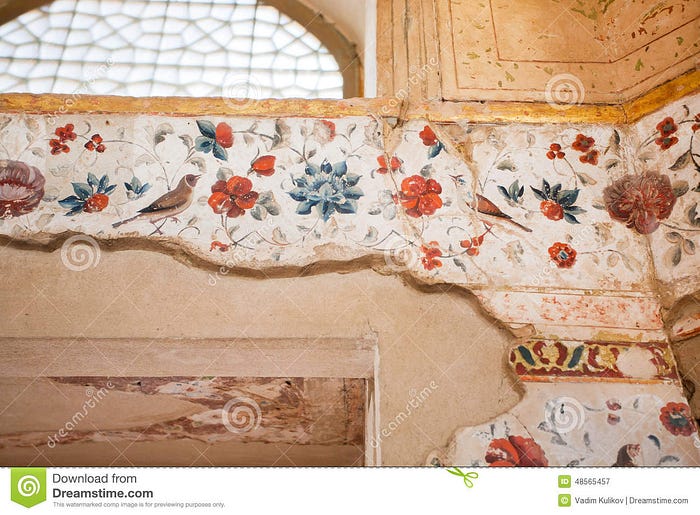


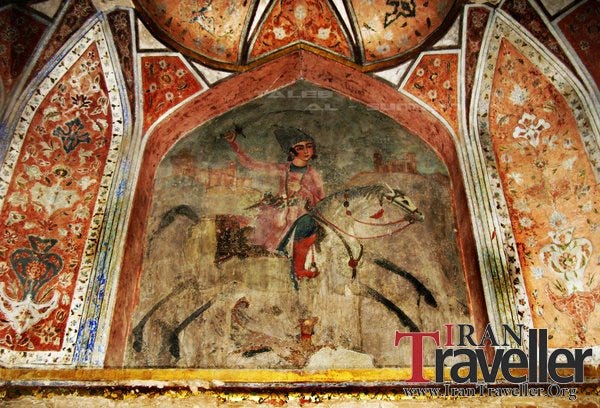
— — — — — — — — — — — — — — — — — — — —
Δείτε το βίντεο:
Исфахан: имперская столица сефевидов (суфийской династии Ирана) — половина мира
https://www.ok.ru/video/1416652720749
Isfahan: the Imperial Capital of the Safavid (: Sufi) Dynasty of Iran is Half of the World
https://vk.com/video434648441_456240217
Ισπαχάν: η Πρωτεύουσα των Σαφεβιδών (της Δυναστείας των Σούφι) είναι ο Μισός Κόσμος
Περισσότερα:
Στα περσικά (φαρσί) λένε “Εσφαχάν νασφ-ε Τζαχάν”, δηλαδή ότι το Ισπαχάν είναι ο μισός κόσμος. Γνωστή ως Ασπάδανα στα αρχαία ελληνικά, το Ισπαχάν ήταν μια μικρή πόλη στα αχαιαμενιδικά (550–330), αρσακιδικά (250 π.Χ. — 224 μ.Χ.) και στα σασανιδικά (224–651) χρόνια. Όταν με την ισλαμική κατάκτηση (636–642–651), το Ισπαχάν έγινε πρωτεύουσα της χαλιφατικής επαρχίας Τζεμπάλ (: βουνά) που περιλάμβανε την οροσειρά του Ζάγρου και το δυτικό ιρανικό οροπέδιο, άρχισε μία ανέλιξη που κορυφώθηκε στα σαφεβιδικά (1501–1736) χρόνια.
Το Εσφαχάν, όπως λέγεται στα περσικά, είναι μια από τις πιο εντυπωσιακές αυτοκρατορικές πρωτεύουσες του κόσμου. Επίκεντρο της σαφεβιδικής πρωτεύουσας ήταν η τεράστια πλατεία Νακς-ε Τζαχάν (εικόνα του κόσμου), όπου από το αυτοκρατορικό περίπτερο Αλί Καπού ο σάχης παρακολουθούσε τους αγώνες πόλο που λάμβαναν χώρα. Εκεί βρίσκονται και δυο από τα ωραιότερα τζαμιά του κόσμου: το Τζαμί του Σεΐχη Λουτφολάχ και το Τζαμί του Σάχη (σήμερα: ‘ταμί του ιμάμη’).
Για τους Ιρανούς από τα πρώιμα αχαιμενιδικά χρόνια ‘κήπος’ σήμαινε ‘παράδεισος’ κι όλοι οι σάχηδες των προϊσλαμικών και των ισλαμικών χρόνων οργάνωσαν εντυπωσιακούς κήπους κι έκτισαν ανάκτορα μέσα σε κήπους με λίμνες. Το ανάκτορο Τσεέλ Σοτούν (των σαράντα κιόνων) και το ανάκτορο Χαστ Μπεχέστ (των οκτώ παραδείσων) είναι τα πιο εντυπωσιακά από όσα σώζονται.
Περισσότερα:
https://en.wikipedia.org/wiki/Isfahan
https://en.wikipedia.org/wiki/Naqsh-e_Jahan_Square
https://en.wikipedia.org/wiki/%C4%80l%C4%AB_Q%C4%81p%C5%AB
https://en.wikipedia.org/wiki/Chehel_Sotoun
https://en.wikipedia.org/wiki/Hasht_Behesht
https://en.wikipedia.org/wiki/Sheikh_Lotfollah_Mosque
https://en.wikipedia.org/wiki/Shah_Mosque
https://en.wikipedia.org/wiki/Safavid_dynasty
https://ru.wikipedia.org/wiki/Исфахан
https://el.wikipedia.org/wiki/Ισφαχάν
— — — — — — — — — — — — — — — — –
Διαβάστε:
Isfahan (اصفهان), ancient province and old city in central Iran (Middle Pers. “Spahān,” New Pers. “Eṣfahān”). Isfahan city has served as one of the most important urban centers on the Iranian Plateau since ancient times and has gained, over centuries of urbanization, many significant monuments; a number of Isfahan’s monuments have been designated by UNESCO as world heritage sites. Isfahan city, the capital of Isfahan Province, is located about 420 km south of Tehran, and is Persia’s third largest city (after Tehran and Mashad) with a population of over 1.4 million in 2004.
http://www.iranicaonline.org/articles/isfahan
Isfahan v. Local Historiography
Isfahan is exceptional in the number and variety of works of local historiography; no other Persian city has attracted nearly as many such works. These works were written predominantly in two periods: the pre-Mongol (and in particular the pre-Saljuq) period and the 19th century; works written in the 20th century will not be dealt with extensively here. Works of local historiography about Isfahan can be classified into two distinct literary genres: the biographical dictionary and the adab-oriented local history.
Biographical dictionaries. Biographical dictionaries of local perspective were written for a large number of Persian cities in the pre-Mongol period, but only a fraction of them are extant in either the original Arabic or Persian renderings. Two biographical dictionaries about scholars from Isfahan, both written in Arabic, have come down to us. The earlier of these two, the Ṭabaqāt al-moḥaddeṯin be-Eṣfahān wa’l-wāredin ʿalayhā, by Abu’l-Šayḵ ʿAbd-Allāh b. Moḥammad (274–369/887–979), was probably written in the 350s/960s, since the latest dates mentioned do not relate to events far beyond 350 (ed. Baluši, IV, p. 230, dated 353).
The mention of dates as late as that seems to be exceptional, so they could have been added during the final stages of the process of completing the work. The second work of this genre is Ḏekr akbār Eṣfahān by the Hadith transmitter and historian Abu Noʿaym Eṣfahāni (q.v.; d. 430/1038). The latest dates in this work suggest that it was completed in the 410s/1020s.
Abu’l-Šayḵ was not necessarily the first author from Isfahan to write a biographical dictionary about the scholars who lived in, or had come to, his hometown. Among the many sources he quotes, the Hanbalite scholar Ebn Manda (d. 301/913–14) is the most prominent. On the basis of this and other later sources, it is almost certain that Ebn Manda wrote such a work. It seems that it was still known in the immediate pre-Mongol period, since the author of an analogous work on the scholars of Qazvin was apparently able to use it then (Rāfeʿi, I, p. 2).
Moreover, Abu’l-Šayḵ frequently mentions men who wrote their mašyaḵa (list of teachers with whom they studied Hadith and other Islamic sciences); thus, it would be reasonable to assume that he used a number of these in preparing his work. The transition from writing down one’s own mašyaḵa to compiling a book on the “categories” or “generations” of scholars is likely to have been a relatively smooth one.
Undoubtedly, Abu’l-Šayḵ was, in turn, one of the most important, perhaps even the single most important, source for Abu Noʿaym, who referred to him as Abu Moḥammad b. Ḥayyān. Except for a very few, all the scholars included in Abu’l-Šayḵ’s work are also mentioned by Abu Noʿaym. Abu Noʿaym did not, however, merely write a continuation (ḏayl) to Abu’l-Šayḵ’s work; rather, he used most of his material in a slightly abridged or otherwise adapted form; thus, any changes that Abu Noʿaym introduced into the text of his source can be taken to be intentional.
Other sources of comparable character were identified first by Sven Dedering in the introduction to his edition of Abu Noʿaym’s work, and have recently been discussed more comprehensively by Nur-Allāh Kasāʾi in the introduction to his Persian translation of the work. Kasāʾi also provides a detailed comparison between the respective works of Abu’l-Šayḵ and Abu Noʿaym. It is also worth mentioning that an important source for Abu Noʿaym was the (apparently lost) Ketāb Eṣfahān by Ḥamza Eṣfahāni (see below).
These two biographical dictionaries are similar in scope, but they offer a number of differences in form: Abu’l-Šayḵ arranged his entries according to the principle of ṭabaqāt (categories), whereas Abu Noʿaym adhered to alphabetical order (except for the Companions of the Prophet), using the ṭabaqāt principle only within larger groups made up of men who bore very common given names such as Aḥmad (I, pp. 77 ff.).
Both works start with an introductory chapter, that of the earlier work being much more concise. Abu Noʿaym places a perceptible stress on the good qualities of the Persians and their merits in contributing to the spread of Islam and the maintenance of its purity.
For instance, half of the section on the Companions of the Prophet is devoted to Salmān Fār(e)si (q.v.), and the stories about the Arab conquest of Isfahan provide unfavorable details about how the invaders proceeded. Both works link the early history of Isfahan back to the prophetic cycle of history by claiming that the people of Isfahan were the only ones who did not support Nimrod in his rebellion against God, but supported Abraham instead (Abu’l-Šayḵ, 1989, I, p. 150; 1987–92, I, p. 28, Abu Noʿaym, I, pp. 48 ff.).
The biographical parts of both of these works shed some light on institutions of learning and their development. The earlier work describes teaching activity taking place mainly in mosques and in private homes, whereas the later one refers to specialized institutions unknown to the earlier source, such as a “House of learning and transmission,” (bayt al-ʿlm wa’l-rewāya) mentioned in relation to someone who died in 363/973, as well as a “House of Hadith and transmission” (baytal-ḥadiṯ wa’l-rewāya )(ed. Dedering, I, pp. 156, 221).
Other matters for which contemporary scholars have found it useful to resort to using local biographical dictionaries in general, and in particular those written about Isfahan, include the office of the judge (Halm) and the spread of law schools (Melchert; Tsafrir). Scholars have also offered, on the basis of such sources, reconstructions of the rise of Sufism to a respected movement that managed to attract even some of the more prominent religious scholars (Paul, 2000a, using methods developed by Chabbi).
Both books discuss in their introductions the pleasant landscape and climate of Isfahan and its surroundings in a very similar way, thus apparently laying the foundation for further developments of the genre that treats local history and geography as closely related subjects.
Adab-oriented local historiography. Works of local historiography written in the pre-Mongol period mostly belong to the genre of biographical dictionaries. The only extant work of this genre about Isfahan is Māfarruḵi’s Maḥāsen Eṣfahān in Arabic, which was written probably some time between 464/1072 and 484/1092 (Bulliet), when Isfahan had become the capital of the Great Saljuq empire.
Māfarruḵi includes quotes from Ketāb Eṣfahān, the lost work of Ḥamza Eṣfahāni; thus it seems that in Isfahan there was something like a tradition of writing local history in both genres. It is, however, impossible to venture a reconstruction of Ḥamza’s work based on the rather short references in Abu Noʿaym and Māfarruḵi, but it seems likely that it had a part similar to a biographical dictionary (including not only scholars, but also men of letters) and another one on antiquities (Paul, 2000b).
Another such work on “the glories of Isfahan” (fi mafāḵer Eṣfahān) may have existed in the form of ʿAli b. Ḥamza b. ʿOmāra’s Qalāʾed al šaraf, which is mentioned by Mā-farruḵi (p. 27) and Yāqut (V. pp. 200 f.) but seems to be lost. Nevertheless, it is probable that there was a tradition of writing adab-oriented local histories of Isfahan as well as biographical dictionaries of scholars.
Māfarruḵi’s work was translated into Persian in the 14th century by Ḥosayn b. Moḥammad b. Abi’l-Reżā Āvi, who rearranged it by dividing the text into eight chapters and added further material in several places, in many cases poetry, as well as praise of the Il-khanid vizier who governed Isfahan in his time. Māfarruḵi’s work is a pleasantly arranged assortment of stories, including some about storytelling itself. It was written from the vantage point of the secretarial class that focuses on the rules of good governance, which are sometimes linked to the pre-Islamic past.
This is history as a means of conveying contemporary messages; the rules are set first in a distant past, and later cases are used to illustrate that they are still valid. In its historical parts, the text certainly does not aim to recount history “as it really happened,” but tells stories of a historical nature as exempla to illustrate general rules that mostly pertain to good governance. Since these rules are grounded in a common cultural code shared by the author and his audience (and, in fact, later generations as well), the work is permeated with the values that were characteristic of the author’s time and social background. This work’s overall message is that experience (tajreba) has shown time and again that successful rulers are those who heed the advice of secretaries, viziers, and even the ordinary public. It is irrelevant that some of the stories told to convey this point of view may be fictitious.
Works written in the later 19th century; No local history of Isfahan seems to have been written under the Safavids or in the period immediately following their downfall. Local historiography resumed only in the second half of the 19th century, particularly as a response to Nāṣer-al-Din Shah’s project for a general description of the regions of Persia called Merʾāt al-boldān. Thus geography, in particular historical geography, is the focus of interest in some of these works, which are a source of information about city quarters and even about individual buildings.
One of the works written for Nāṣer-al-Din Shah was Neṣf al-jahān fi taʿrif al-Eṣfahān (in classical Arabic, the name of the city did not bear the definite article) by Moḥammad-Mahdi b. Moḥammad-Reżā Eṣfahāni. The earliest extant manuscript of this work is dated 1287/1870, but additions and revisions were made, apparently, until 1303/1885. It continued the tradition of adab-oriented historiography from the earlier periods in that it also presented a mix of history and geography, as indeed would have been what the king wanted.
The historical part takes up almost half of the text, highlighting two periods. In the section dealing with early history (pp. 139–69), the author tried to link his understanding of the results of modern (Western) scholarship (archeology and research on cuneiform texts) to the Persian (Šāh-nāma) tradition. After the legendary kings of Persia and Babylon, most of ancient and medieval history is given short shrift; but the author still manages to quote Māfarruḵi a couple of times and refers to Jean Chardin (q.v.) and Engelbert Kaempfer as witnesses to the prosperity of the country under the Safavids (pp. 178–79).
The second period focuses on the conquest of Persia by the Afghans and the ensuing period of upheaval, which he pursues as far as the reign of Fatḥ-ʿAli Shah Qājār (q.v.; pp. 180 ff.). In this part, he frequently refers to European writers, among whom Sir John Malcolm’s History of Persia (1829) holds a prominent place (the references to Chardin and Kaempfer are probably also taken from here). Whenever the author has to decide whether the chronicle written by Mirzā Mahdi Khan Estrābādi (certainly the Tāriḵ-e nāderi is intended) or the English work is more reliable, he opts for the latter work.
Ḥājj Mirzā Ḥasan Khan Jāberi Anṣāri (1870–1957) wrote a history of Isfahan, which is called Tāriḵ-e Eṣfahān in the latest edition. (An earlier version, shorn of the third volume, which is a collection of biographies, is known as Tāriḵ-e Eṣfahān wa-Ray wa hama-ye jahān; the first version, called Tāriḵ-e neṣf-e jahān wa hama-ye jahān, was published in lithograph edition in Isfahan in 1914.) This is also a combination of both geography and history, and it seems particularly valuable for its detailed description of the Zāyandarud river and the system through which its waters were distributed (Lambton).
In a section consisting of biographies, dates as late as 1350/1931 are given, thus reaching far into the 20th century. The author was one of the main proponents of the constitutional movement in Isfahan, and so his perspective is also partisan. He was well informed about questions of governance and administration, since he held posts in the provincial administration under Masʿud Mirzā Ẓell-al-Solṭān for long periods, so it is not surprising that his main categoried are ʿemārat (flourishing parts) and virāni/ḵarābi (ruinous state).
http://www.iranicaonline.org/articles/isfahan-v-local-historiography
Isfahan vii. Safavid Period
Isfahan came under Safavid rule in 1503 following Shah Esmāʿil’s defeat of Solṭān Morād, the Āq Qoyunlu (q.v.) ruler of Erāq-e ʿAjam, near Hamadān. No contemporary source describes the conquest of the city in any detail, but we do know that it was accompanied by great brutality. In retaliation for the killing of many Shiʿite inhabitants under the Āq Qoyunlu, Shah Esmāʿil caused a bloodbath among the city’s Sunnites. The Portuguese traveler, Tenreiro, visiting Isfahan in 1524, reports seeing mounds of dirt with bones sticking out that were reportedly the remains of 5,000 people killed by the Safavids (Tenreiro, pp. 20–21).
Following the conquest, Esmāʿil appointed Dormeš Khan Šāmlu governor. Mirzā Šāh-Ḥosayn, originally a builder (bannā, meʿmār) in Isfahan, at that point started his political career by serving Dormeš Khan as vizier of the dāruḡa (“mayor”; see below and CITIES ii) of the city. He was later promoted to the post of wakil (royal deputy, the highest subject of the king) of Shah Esmāʿil, and was so influential that his enemies finally assassinated him in 1523 (Rumlu, pp. 231–32). In fact, his case is not an exception. Beginning with the reign of Shah Esmāʿil, Isfahani families occupied high positions in the Safavid administration, and at least one Safavid grand vizier, Mirzā Salmān Jāberi, appointed by Moḥammad Ḵodābanda in 1578, hailed from an Isfahani family.
Isfahan continued to be a focus of Shah Esmāʿil even as he set out to conquer other parts of the Iranian plateau. Stopping at the city from time to time, he is said to have been keen to restore the city to its pre-Mongol significance and in this regard paid particular attention to the role and function of its squares. In 1509 he ordered the enlargement of the Meydān-e Naqš-e Jahān (Royal Square) to accommodate the playing of polo, qabāq-bāzi, and other games and forms of entertainment. He used the Old Meydān (Meydān-e kohna) as the place of execution of rebels. The building of Hārun-e Welāyat, the mausoleum of a saint, at the southern end of the Old Meydān, was completed by Mirzā Šāh-Ḥosayn in 1512 (Ḵᵛāndamir, IV, p. 500; Quiring-Zoche, p. 64).
Shah Ṭahmāsb (r. 1524–76), who was born in a suburb of Isfahan in 1514, added several other buildings, mostly mosques, to the city. He incorporated Isfahan into the royal domain in 1534, and the city’s status as crown land (ḵāṣṣa) remained largely unchanged until the end of the Safavid period (Röhrborn, p. 118). The only exception is the reign of Moḥammad Ḵodābanda (1577–87), who offered Isfahan as a revenue assignment (teyul) to Ḥamza Mirzā, one of his sons and his heir.
The de-facto ruler of Isfahan, however, became his plenipotentiary (ṣāḥeb-e eḵtiār), Farhād Khan (q.v.), who did much to secure the city from the Arašlu tribe, who had taken control of the environs and were moving into the city as well. Once in power, Farhād Beg built himself a fortified residence alongside the Bāḡ-e Naqš-e Jahān (Royal Garden) and designed a new garden around it, destroying the bāḡ itself and moving its trees in the process (Afuštaʾi Naṭanzi, pp. 339–40).
During the reign of Shah Ṭahmāsb, the city twice experienced wartime disorder. The first time was during the civil war between two Qezelbāš tribal leaders, Čoḡā Solṭān Takkalu and Ḥosayn Khan Šāmlu, in 937/1530. The latter attacked Čoḡā Solṭān in a suburb of Isfahan, and Čoḡā Solṭān took refuge in the royal tent located near his camp. Ḥosayn Khan managed to kill Čoḡā Solṭān but ultimately was defeated by Takkalu reinforcements. He retreated to Isfahan and then fled to Fārs. It seems that the city itself was not thrown into disarray during this conflict (Rumlu, pp. 308–10).
The revolt of Alqās Mirzā (q.v.), Ṭahmāsb’s brother, in 1548–49 represents the second period of disorder for Isfahan. After ravaging Hamadān, Ray, and Qom, Alqās Mirzā’s troops, supported by the Ottoman Sultan Solayman, came close to Isfahan. He believed that the citizens would open the city’s gate without fighting, because no substantial Safavid force was around. Instead, the people of Isfahan, led by Šāh Taqi-al-Din Moḥammad Mir-e Mirān, a community leader (naqib), and his brother Mir Ḡiāṯ-al-Din Moḥammad, shut the city gates and put up strong resistance, strengthened in their determination by the fact that the shah had sent his own harem to Isfahan (Navidi, p. 101).
Alqās, finding it difficult to subdue Isfahan, gave up on his attempt to take the city and left for Shiraz (Rumlu, p. 434). The event became certainly the turning point of Alqās Mirzā’s revolt, which ended with his arrest and confinement in Qahqaha castle the following year (Rumlu, pp. 437–38). Although Isfahan made a great contribution to Ṭahmāsb’s cause through its fierce resistance, it does not seem to have received any royal favors in return. We only know of an order by Ṭahmāsb to abolish various taxes imposed on guilds in 1563 (Honarfar, pp. 88–90). This may simply have been part of the exemption from the tax on commerce (tamḡā), which Ṭahmāsb offered throughout the kingdom in 972/1564. The measure was apparently taken after the oracle of Ṣāḥeb-al-Amir appeared in the ruler’s dream (Qāżi Aḥmad, p. 449).
After Ḥamza Mirzā’s death in 1586, Isfahan fell to his brother, Abu Ṭāleb Mirzā. Farhād Khan lost his post and was incarcerated. Ḡolām (slave) forces loyal to him revolted, however, and managed to take hold of the city fortress with their own hostages. Long negotiations with representatives of Shah Ḵodābanda, who had meanwhile arrived in Isfahan, led to the release of the hostages but not the freeing of Farhād Khan. The ḡolāms only surrendered after royalist forces threatened to bombard the citadel.
The structure was destroyed after the rebels had left it. Shortly thereafter Moḥammad Ḵodābanda died, and Isfahan opened up its gates to the forces of the new ruler, Shah ʿAbbās I, who proceeded to grant the city and its environs to his wakil, Moršedqoli Khan, as a teyul. As city mayor he appointed Yuli Beg. The latter set out to restore the Tabarak fortress but also showed signs of autonomy. The decision of Shah ʿAbbās to visit Isfahan in 1590 led to a confrontation, with Yuli Beg retreating into the fortress with his troops.
Ultimately the shah reconciled himself with Yuli Beg, although the post of senior governor (ḥākem) went to ʿAli Beg Ostājlu (Afuštaʾi Naṭanzi, pp. 33–35, 233–38; Quiring-Zoche, pp. 80–89). Shortly thereafter, in early 1590, Isfahan was made crown land again, with the post of vizier going to Mirzā Mo-ḥammad Nišāpuri (Ḵuzāni Eṣfahāni, fol. 39b).
Isfahan as the Safavid Capital
The idea of turning Isfahan into a new capital must have come to Shah ʿAbbās shortly after his accession in 1587, for the first mention of designs for the new Isfahan occurs under 998/1588 in the Afżal al-tawāriḵ (Ḵuzāni Eṣfahāni, fol. 38v). At that early date some changes were made, among them the beginnings of the ʿĀli Qāpu palace (q.v.), but an overall new design did not come to fruition, possibly because of opposition.
The choice of Isfahan as the new administrative and cultural center was based in part on the availability of water — in the form of the Zāyandarud — but was clearly politically motivated as well. The city was located deep into the interior and thus far less exposed to the Ottoman threat than Tabriz and even Qazvin had been. It was also well positioned vis-à-vis the Persian Gulf, and thus played a pivotal role in Shah ʿAbbās’s territorial and commercial designs in that direction, which he initiated shortly after Isfahan had become the new capital (Mazzaoui).
Both Eskandar Beg Torkamān and Mollā Jalāl Monajjem tell us that the royal household moved to Isfahan and that Shah ʿAbbās proclaimed the city his capital (maqarr-e dawlat) in 1006/1597–98, giving orders for the erection of “magnificent” buildings (Eskandar Beg, tr. Savory, pp. 724; Mollā Jalāl, p. 161). Most scholars in fact consider this year as the time of transfer of the Safavid capital from Qazvin to Isfahan.
Stephen Blake’s new interpretation, which attaches crucial importance to the mentioning of the older design, is convincingly refuted by Babaie (see Blake, and the review by Babaie, pp. 478–82; for the various phases of the new design, see also Haneda, 1990). It is true that, from 1590 onward, Isfahan was often called dār al-salṭana in the sources, but we have to realize that it was not the capital in the modern sense of the word. As had always been the case among rulers of nomadic background and as would be true until the 19th century in Persia, the capital really was where the ruler happened to be.
The Dutch noted how, in the later 17th century, Isfahan’s population would swell by some 60,000 whenever the shah returned to the city. Tabriz and Qazvin were still referred to as dār al-salṭana as well, after the “transfer” of the capital, and Shah ʿAbbās stayed in Isfahan less than two months a year on average throughout his reign, less than the three months he spent in Māzandarān as of 1619.
Shah Ṣafi was absent from Isfahan for a full five years between 1631 and 1636. Still, Isfahan played a central role from the inception of Safavid rule, with members of its prominent families heavily represented in key bureaucratic positions as early as Shah Esmāʿil I’s administration (Quiring-Zoche, pp. 252–52).
That the city grew in importance throughout the 1590s is suggested by the fact that Shah ʿAbbās made the trip to and from Qazvin at least eighteen times in this period and visited Isfahan every year between 1590 and 1603 (Melville, p. 200). After it became the capital, all coronation ceremonies were held in Isfahan. The city in the course of time also gained more of a central focus as later shahs lost their appetite for campaigning. Shah ʿAbbās II was the last Safavid monarch who spent considerable time on the battlefield, as well as in the royal residence in Māzandarān.
Especially the last two rulers, Solaymān and Solṭān-Ḥosayn, rarely left the confines of their palace, and Solṭān-Ḥosayn often resided at Faraḥābād, the pleasure garden built outside Isfahan (although between 1717 and 1721 the shah was absent from Isfahan, spending time in Kāšān and Qazvin and returning to the capital just a year before the fall of the capital to the Afghans; Floor, 1998, pp. 31, 36). In sum, it may be said that Isfahan gradually acquired the status of capital (Quiring-Zoche, p. 105).
Isfahan’s newly acquired status found expression in the construction of a new governmental and commercial center southwest of the existing one, in a shift in that direction that had begun under the Saljuqs (Gaube and Wirth, pp. 47, 54). A new royal square, the Meydān-e Naqš-e Jahān, measuring 524 x 158 m, formed the fulcrum of this development. The model for the meydān seems to have been the meydān of the old city, although it has been suggested that the meydān of Kermān, laid out by Ganj-ʿAli Khan in the late 16th century, served as a model as well (Galdieri, 1974, p. 385; Gaube and Wirth, p. 55).
The outline of the meydān and the adjacent Qay-ṣariya bazaar was begun in 1001 — a one-year tax relief was granted for the purpose — and the Čahār Bāḡ as well as the Shaikh Loṭf-Allāh mosque were designed in 1002 (Ḵuzāni Eṣfahāni, foll. 61v, 74). In the year 1012/1603, the shops, the caravansaries, the bathhouses, and the coffeehouses around the meydān were completed (Jonā-bādi, pp. 759–60). The same year saw the first proposal to connect the waters of the Zāyandarud with those of the Kuhrang river.
This scheme came up again in 102930/161619–20 and in the 1680s, but would only be executed in the 19th century (Mollā Jalāl, p. 244; Eskandar Beg, pp. 1170–71, 1180 see i[2], above). The Masjed-e Šāh, anchoring the southern end of the square, was begun in 1020/1611. The mosque complex was virtually completed by the end of Shah ʿAbbās I’s reign, although additions and repairs continued to be made until 1078/1667 (Blake, p. 140).
Following the completion of the royal square, the Qayṣariya bazaar, with its entry gate at the north end of the square, gradually developed into a huge covered marketplace (for its development, see Gaube and Wirth, pp. 31 ff.; Blake, pp. 101 ff.). Henceforth this part of the city would be its preeminent commercial center, even if the old center continued to play an important role in social life (see x, below).
In later years more building activity took place, mostly involving palaces. A new royal palace took shape in the Naqš-e jahān garden, adjacent to the new meydān, which had been a garden retreat for Shah Esmāʿil I. The palace grew out a series of mansions, principally one owned by Farhād Khan (q.v.), but the exact stages of its construction remain unclear (Eskandar Beg, II, p. 780; tr., II, p. 977; discussion in Blake, pp. 58 ff.).
The same is true of the building of the ʿĀli Qāpu, the five-storey audience hall overlooking the meydān, which was begun under Shah ʿAbbās but not used until the reign of Shah Ṣafi (Galdi-eri, 1979). The Ṭālār-e Ṭawila, the Āyena-Ḵāna, and the Čehel Sotun (Forty columns), too, date from this period; they were all built in the period 1635–47, under the auspices and patronage of Moḥammad Sāru Taqi (Floor, 2002; Babaie, 1994, pp. 128–29; idem, 2002, pp. 23–24).
The Čehel Sotun was constructed in 1056/1646 or 1057/1647. It was rebuilt after it burned down in 1706, and the structure as it exists today dates from that time (Blake, pp. 66–69). The Pol-e Ḵᵛāju was erected under Shah ʿAbbās II as well (see x, below).
The wall that had surrounded Isfahan for centuries and that had always marked the boundary between the inner city and the suburbs continued to exist, but by the early 17th century it had lost its significance as a defense mechanism and thus was allowed to become dilapidated (Gaube and Wirth, p. 33; Haneda, 1996, pp. 370–72).
The old city anyhow was unable to accommodate ʿAbbās I’s designs for a new capital, and much of the new development took place beyond the perimeter of the wall. Southwest of the new royal palace and the area around the square, new quarters such as ʿAbbāsābād and Ḵᵛāju were developed in the western and southern suburb. Craftsmen and merchants from all over the country were urged to come to settle in Isfahan.
Most notably, the shah resettled craftsmen from newly conquered Tabriz to ʿAbbāsābād and had Armenian merchants from Julfa settle in New Julfa (Pers. Jolfā; see JULFA), which was specially built for them at the southern bank of the Zāyandarud. In the middle of these new quarters ran the long and straight avenue of Čahārbāḡ from a gate of the old city to the Hazār Jarib garden situated at the southern hill. Beautiful gardens were built at both sides of the avenue.
With its canals and their abundant water, the greenery of its parks, its wide and straight streets and its spacious layout, the urban plan of the new city suited the elite, government officials and the rich, who came to settle down there from outside of Isfahan. Thus, the character of the new city differed substantially from that of the old city, which maintained the character of a traditional Persian city with its winding streets, small houses, and little public greenery, and where most Isfahanis continued to live.
The building activities continued until nearly the end of the Safavid rule in the 18th century. Various shahs also built pleasure gardens across the Zāyandarud. Thus Shah ʿAbbās I had ʿAbbāsābād (Hazār Jarib) constructed as an extension of the Čahārbāḡ ʿAbbās II created Saʿādatābād in 1070/1659; and Shah Solṭān-Ḥosayn had Faraḥābād laid out in 1697, making further additions and embellishments in 1711 and again in the period 1714–17 (Ḵātunā-bādi, pp. 562–63; NA, VOC 1856, 15 April 1714, fol. 714; Darhuhaniyan, p. 146; VOC 1870, 9 March 1715, foll. 614–15; VOC 1870, 25 November 1714, fol. 495; VOC 1848, 13 April 1715, fol. 2280v; VOC 1897, 3 December 1716, fol. 247; Honarfar, pp. 722–25; Blake, pp. 74–81).
The Madrasa-ye Maryam Begom was built and turned into waqf (endowment) property by Maryam Begom, Shah Solṭān-Ḥosayn’s great aunt, in 1703 (Honarfar, pp. 662–67). The Madrasa-ye Čahārbāḡ, the blue, lofty dome of which can be seen from anywhere in Isfahan, was also built under the reign of Solṭān-Ḥosayn, begun in 1704–05 and finished in 1706–07 (Ḵātunābādi, p. 556; Herdeg). Isfahan and its buildings are always associated with the name of Shah ʿAbbās I. In reality, however, they are the cooperative work of many people, royal, religious, military and civil, throughout the Safavid period (see x, below).
Various Western observers claimed that 17th-century Isfahan was the largest city in all of Safavid Persia (Schillinger, p. 228). According to Jean Chardin (q.v.), Isfahan had 162 mosques, 48 madrasas, 1,802 caravansaries, 273 public baths, and 12 cemeteries within its walls (for an overview of the city’s caravansaries, see Vademecum of Caravanserais in Isfahan). The exact number of its population is not known, but clearly grew over time, especially after the city gained the status of capital.
Don Juan of Persia for the 1590s estimated 80,000 households and 360,000 inhabitants (Don Juan, p. 39). Thomas Herbert (q.v.), visiting in 1627–29, calculated 70,000 households and a total of 200,000 people (Herbert, p. 126). Adam Olearius in 1637 gives a figure of 500,000 inhabitants (Olearius, p. 553).
Chardin confirms this by suggesting that in the late 17th century the population of Isfahan was almost as numerous as that of London, then the biggest city in Europe with an estimated population of 500,000. Three-quarters of the population may have lived within the city walls, and one-quarter outside of them (Blake, p. 38). This would have made late Safavid Isfahan one of the biggest cities in the world, besides London, Istanbul, Šāhjahānābād (Delhi), Beijing, and Edo (Tokyo).
Administration
The post of ḥākem as the local governor of Isfahan goes back to the period before the Safavids. In the 16th century, the ḥākem was often an individual of high rank in the larger administration. Thus two of the ḥokkām were also preceptors of rulers, Durmiš Khan for Sām Mirzā, and Mohammad Khan for the young Moḥammad Ḵodā-banda. In the early reign of Shah ʿAbbās I, Farhād Khan served as ḥākem (Quiring-Zoche, p. 138). Another one of Isfahan’s principal administrators was the dāruḡa. In the 16th century the dāruḡa may have been appointed by the ḥākem, but later on it was the shah who appointed him, something that is reflected in the rather frequent mention of the position in the Persian chronicles.
In the European sources, the dāruḡa is often equated with the post of mayor (Chardin, X, p. 28; Fryer, III, p. 23; Kaempfer, p. 110). The jurisdiction is not always clear, but it seems that, as a rule, the dāruḡa was not in charge of fiscal matters. Initially the function may have had a military aspect, but, as it evolved in the 17th century, the dāruḡa mostly dealt with issues of law and public security (Fryer, III, p. 23; Minorsky, pp. 82, 149; Floor, 2001, p. 118). The association of the function of dāruḡa with crown domain (Floor, 2001, pp. 116–17) is not fully borne out by the evidence. Already in the 15th century we hear of a dāruḡa in Isfahan (Quiring-Zoche, pp. 130, 134).
In the Safavid period we have Mirzā Jān Beg, who was appointed dāruḡa in 1530–31, three or four years before the conversion of Isfahan to crown land (Haneda, p. 80). The appointment of Georgians to the post also goes back further than 1620, for Bižan Beg Gorji acceded to the post in 998/1590 and Kostandil (Constantine), the son of the Georgian King Alexander II, was appointed dāruḡa in 1602–03 (Ḵuzāni Eṣfahāni, foll. 40b, 148; Maeda, pp. 261–62). Still, several non-Georgians were appointed in later years, for instance, Tahtā Khan Beg and Bektāš Beg Ostājlu, and only in 1620 did the post become the prerogative of a son of the governor of Georgia, in an arrangement made by Shah ʿAbbās (Della Valle, II, p. 176; Chardin, X, p. 29; Kaempfer, pp. 110–11).
From that moment until the end of Safavid rule, the dāruḡa was always a Georgian. From the moment Isfahan turned into crown domain, a vizier was appointed as well (Quiring-Zoche, p. 145). Typically a ḡolām, this official was assigned to the divān-e ḵāṣṣa (office of the crown lands) and as such charged with the fiscal administration of the town. The vizier also had a judicial function in that, once a week, he had petitions read to him from people with grievances (Pacifique de Provins, p. 393).
However, the position was fluid. Thus in 1046/1636 the post of vizier was combined with that of the wazir-e mawqufāt (minister of property endowments) in the person of Moḥammad-ʿAli Beg Eṣfahāni, but the two were divided again two years later, when Mirzā Taqi Dawlatābādi became vizier and Mir Ṣafi-al-Din Mo-ḥammad was appointed wazir-e mawqufāt (Eskandar Beg, 1938, p. 296).
The kalāntar was another city official. He may have taken over from the raʾis in the 16th century as a representative of the local population, as part of a development whereby local notables made room for centrally appointed bureaucratic officials, who were often outsiders. He should not be confused with the Armenian kalāntar of New Jolfā. Although appointed by the shah, he was chosen in consultation with the people and served as an intermediary between them and the authorities.
One of his tasks was to defend the populace against tyranny, including the tyranny of unscrupulous vendors, examine their complaints and the grievances of merchants. He also acted as a mediator with the guilds, and appointed the heads of city wards, the kadḵodās. Collecting rent and taxes appears to have been among his responsibilities as well (Minorsky, p. 82; Rafiʿā, p. 73; Thevenot, p. 103; Fryer, III, p. 24; Sanson, p. 29; Quiring-Zoche, pp. 162–67; Aubin, p. 37; Floor, 2000, p. 46).
A Multi-lingual, Multi-ethnic City
In the course of Shah ʿAbbās I’s reign Isfahan developed into a lively, cosmopolitan city, home to Muslims, Armenians, Georgians, and Jews, Indians, as well as representatives of European religious orders and agents of trading companies. The center of town, the Meydān-e Naqš-e Jahān, was frequently the scene of popular games such as polo and qabāq-andāzi, an archery game; and there ram fighting, bull fighting, wolf baiting, and other forms of entertainment were performed (examples in Della Valle, I, pp. 709–10, 713–14; Chick, p. 184; Fi-gueroa, II, pp. 58 f.; Gaudereau, pp. 71–72).
Following a military victory, on holidays, and on the occasion of visits by important foreign envoys, the Meydān and the bazaar were illuminated and performances of jugglers and rope dancers staged (Jonābādi, pp. 805, 829–31; Della Valle, I, pp. 821, 829; II, pp. 7–8, 36; Chardin, IX, pp. 329–30). People mingled in the coffeehouses that flanked the square, lined the Čahār-bāḡ, and were also spread around various other neighborhoods, or sought oblivion in the many establishments concentrated around the Old Meydān that served an opium drink called kuknār (Matthee, 2005, p. 108). Seventeenth-century Isfahan was also home to reportedly 12,000 prostitutes, who occupied the porticos around the Meydān-e Naqš-e Jahān and also served their clientele in an area between the Madrasa-ye Ṣafaviya and the Fatḥ-Allāh mosque (Matthee, 2000).
By the middle of the 17th century, most people in Isfahan had become Shiʿite Muslim as a result of Safavid Shiʿite propaganda policy. They occupied without doubt the most important part of the urban society. There were two kinds of Shiʿite Muslims: Persian speakers and Turkic speakers.
People living in the old city of Isfahan were mostly Persian-speaking. Government officials and their servants, merchants, artisans and their apprentices, professors and students, all spoke Persian. Business and preaching were usually done in Persian. Persian was without doubt the most popular language in the city.
Turkic-speaking people were mainly found at the royal court. Even in the 17th century, when the influence of the turcophone Qezelbāš had diminished considerably, people at the court continued to speak in Turkic. In the 16th century, the wives and mothers of the king had usually been of Turkish origin. Therefore it is not surprising that people spoke Turkic there in and around the royal palace. However, in the 17th century, as most women in the harem were of Georgian origin, they still retained the habit of speaking in Turkic.
In the city itself, the use of Turkic must have been very limited. However, in caravansaries visited by people from Azerbaijan, for example, the common language was Turkic. Members of Turkish tribes coming to the city for commerce would have spoken Turkic as well. Thus, Turkic would have been the second popular language. It was, however, only a colloquial language and never was used as a literary language.
Isfahan was home to many Armenians as well. The city’s Armenians became concentrated in Jolfā as part of a resettlement under Shah ʿAbbās II. Jolfā had an estimated 20,000 inhabitants in the mid-17th century, a number that may have gone up to 30,000 by the end of the century (Herzig, p. 81). These spoke Armenian and for the most part belonged to the Armenian Orthodox church. Most of them were merchants engaged in the trade of Persian silk and precious metals. They had their own networks with compatriots in Europe and India. In their dealings with other merchants in Isfahan they must have spoken Persian.
Further, many of the city’s inhabitants were of Georgian, Circassian, and Daghistani descent. Engelbert Kaempfer, who was in Persia in 1684–85, estimated their number at 20,000 (Kaempfer, p. 204). Following an agreement between Shah ʿAbbās I and Taimuraz Khan, Georgia’s last independent ruler, whereby the latter submitted to Safavid rule in exchange for being allowed to rule as the region’s wāli and for having his son serve as dāruḡa of Isfahan in perpetuity, a Georgian prince converted to Islam served as governor (Chardin, X, p. 29; Kaempfer, pp. 110–11).
He was accompanied by a certain number of soldiers, and they spoke in Georgian among themselves. There must also have been some Georgian Orthodox Christians. The royal court had a great number of Georgian ḡolāms as well as Georgian women. Although they spoke Persian or Turkic, their mother tongue was Georgian.
Isfahan was home to a large Indian community as well. Their presence was particularly important from the commercial point of view. There were two kinds of Indians, Muslim and Hindu. Indians formed a large ethnic community in Isfahan, and their numbers is given as between ten and fifteen thousand (Tavernier, I, pp. 421–22; Thevenot, p. 217). Merchants were engaged in the trade of various Indian goods, such as textiles, indigo (a dyestuff, q.v.), sugar, and tobacco.
Hindu moneylenders had a good business, because Islamic law prohibits Muslims from lending money for interest. The moneylending business was almost an Indian monopoly. They spoke various languages, including Urdu (q.v. at iranica.com), Hindi, and Gujarati (q.v.). Insofar as commerce in Isfahan was concerned though, they certainly spoke in Persian. Hindus often served European companies as interpreters and as brokers (Dale, pp. 70 ff.).
Besides these large groups, there were small communities of Persian-speaking Zoroastrians and Jews. Catholics and Protestants, monks, merchants, and court artisans, were present in small numbers, too. Most of them came from Europe and returned there after several years. There were, however, several monks like Raphael du Mans of the Capuchin order, who lived in Isfahan almost fifty years and died there.
Social divisions were expressed in the distinction between the elite and the common people, but also found expression in traditional rivalries in the old city, where two groups, the Ḥaydari and Neʿmati (q.v.), representing the two quarters of the old city, Dardašt and Jubāra, periodically engaged in communal fighting (Chardin, VII, pp. 289–93; Perry, pp. 107–18).
Isfahan in Crisis
Isfahan’s population is said to have grown by one-fifth or even one-fourth between 1645 and 1665 (Richard, ed., II, p. 262). But thereafter, conditions grew worse for the city as part of an overall deterioration in political management and economic wellbeing in Safavid territory in the second half of the 17th century. In 1662, the city was struck by famine, causing people to assemble in front of the dawlat-ḵāna demanding measures against hoarding (Waḥid Qazvini, p. 307). In 1668–69, famine struck again.
Its main cause was a drought, but hoarding by bakers and grain merchants exacerbated the misery of Isfahan’s residents, and the situation got even worse when, following Shah Solaymān’s coronation, the court and its huge entourage returned to the city before adequate provisioning measures were taken (Chardin, IX, p. 571; X, pp. 2–4; NA, VOC 1266, 8 November 1668, foll. 155, 923v, 941; IOR, G/36/105, 14 August 1668, fol. 36). In the latter part of the 1670s the high cost of living and growing deprivation caused a bread riot in the city, with people pelting political officials with rocks. From early 1678 until mid-1679 in Isfahan alone, more than 70,000 people are said to have died from a terrible famine. In 1678 the common people of the city rose in revolt against inflation and famine (Matthee, 1999, p. 177).
In the second half of the 17th century, the position of religious minorities in the city also worsened. Clerically inspired campaigns put pressure on Jews to convert to Islam; the authorities took various measures to curb wine-drinking and vices associated with coffeehouses, and several decrees were issued restricting the activities of Armenian merchants and Catholic missionaries (Moreen; Matthee, 2006a, pp. 84–94; idem, 2006b). The local Armenian population was made more vulnerable to political and religious pressure by internal splits in the community between Catholics and Schismatics (Ghougassian, passim; Baghdiantz-McCabe, passim).
A new crisis hit Isfahan at the beginning of the 18th century as part of a deepening malaise that affected all of Persia. In 1713 the Isfahan region was made unsafe by Baḵtiāri and Lor brigands, so that no caravans could leave or enter the city unless accompanied by large contingent of soldiers (NA, VOC 1856, 9 October 1713, foll. 494–95). Too years later, famine struck again. Exacerbated by a grain monopoly by harem eunuchs and high-ranking clerics, this crisis pushed bread prices in the city so high that it caused people to riot on 20 February 1715. Cursing the shah and his ministers, the rioters threw rocks at the ʿĀli Qāpu and damaged the gate of the royal kitchen. They also assailed the residence of chief cleric Mollā Moḥammad Bāqer Majlesi.
The shah (Solṭān-Ḥosayn) thereupon dismissed the current city dāruḡa, Qurčišāh Beg, who combined his function with that of supervisor of the city’s victuals (moḥtaseb), and appointed Emāmqoli Khan Zangana, the amirāḵor-bāši and a son of grand vizier Šāhqoli Khan, in his stead. The monarch also had officials dispatched to the residence of Mir Moḥammad-Bāqer to order him to offer a large volume of grain on the royal square. This did not quell the unrest, however.
On 16 June 1715 the people forced the shah, who intended to leave Isfahan, to stay in the city, and the next day they crowded together in front of the royal palace and threatened to plunder and set fire to it (Floor, pp. 26–27; Matthee, 2004, pp. 187–88). From that moment until the fall of the city to the Afghans, the post of moḥtaseb was rotated with increasing speed, but to little avail. Food prices remained sky-high, and the misery in the city continued, with theft, burglaries, and murder becoming common (NA, VOC 1897, 14 November 1716, fol. 237; ibid., 3 December 1716, fol. 268). Beggars were said to be ubiquitous in the city and poverty had reached such levels that the poor would quickly strip the flesh of any dead camel, mule, or horse left out on the street (Worm, p. 293).
The Afghans arrived in Golnābād on 8 March 1722 and defeated the Persian army, which, at about 40,000 men and an additional 30,000 infantry troops, was at least twice as large as that of the Afghans. The Georgian contingent, the only one to fight, was decimated. Losing some 4,000 to 5,000 soldiers on the battlefield, the remainder of the Safavid army sought refuge in the city (Lockhart, pp. 130–43; Floor, 1998, p. 87).
Maḥmud Ḡilzāi with his Afghan tribal forces then moved to Faraḥābād, which he took without meeting any resistance. He next seized Julfa, where the inhabitants welcomed him with food and wine and accepted him as their new ruler. After a few days of panic in which the Afghans could have taken Isfahan proper, the inhabitants quickly reinforced the defenses, and a long siege ensued. The city soon ran out of food, and, especially toward the end of the summer, the misery grew to the point at which people first took to eating tree bark, leaves, and dried excrement and eventually resorted to cannibalism.
After a six-month siege, the city fell to Maḥmud on 23 October 1722 (IOR, G/29/15, 20 October 1722, fol. 80; 30 November 1722, fol. 83; diary of the siege in Floor, 1998, pp. 83–176). Isfahan suffered greatly during the assault and the ensuing occupation. It lost a large part of its population, many of its buildings lay in ruins, and its economy was destroyed. The city survived but its revival would take until the 19th century, and it never regained its former importance.
— — — — — — — — — — — — — — —
Κατεβάστε την αναδημοσίευση σε Word doc.:
https://www.slideshare.net/MuhammadShamsaddinMe/ss-250750290
https://issuu.com/megalommatis/docs/esfahan.docx
https://vk.com/doc429864789_622448190
https://www.docdroid.net/EP63uxd/ispakhan-i-autokratoriki-proteuoysa-ton-safevidwn-docx























































